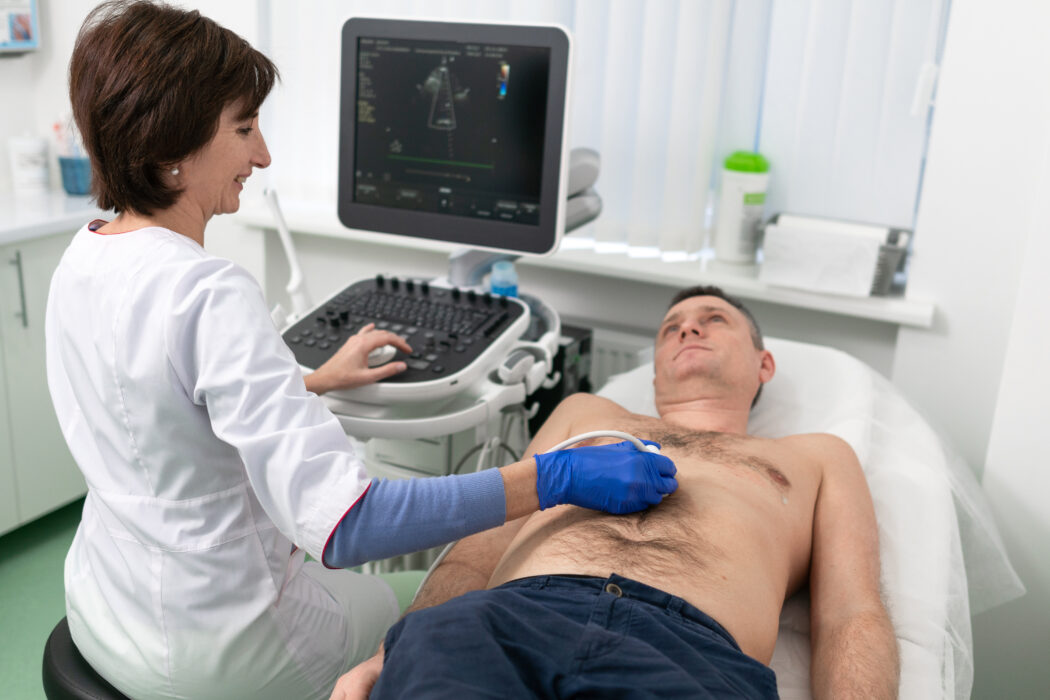The Strong Interest Inventory (SII) is a tool that has helped job seekers identify appealing careers for the better part of a century. It was initially released in 1927 and revised several times to become vastly effective. It works by analyzing individuals’ preferences then directing them to one or more of six categories of careers, called theme codes. Theme codes are characterized by specific features and include occupations that share those characteristics. For example, the Cardiovascular Technologists and Technicians career fall into the Realistic Theme Code Category because it provides a valuable service while solving complex problems.
Cardiovascular Technologists and Technicians work alongside doctors, nurses, and other medical professionals to provide cardiovascular care. Their primary responsibility is to conduct cardiac testing, including but not limited to electrocardiograms (EKGs), echocardiograms, and stress testing. Because these tests require specialized instruments and detailed procedures, Cardiovascular Technologists need to have an acute attention to detail and execute specific instructions. Responsibilities of Cardiovascular Technologists may include; confirming patient medical history, monitoring patients’ vital signs, and recording patients’ results. Additional responsibilities during the test may include positioning the patient appropriately, attaching electrodes to the patient’s body and connecting them to machines to read electrical signals, observing an ultrasound display and record vascular information, and even injecting a contrast medium into patients’ bodies. Cardiovascular Technologists and Technicians involved in surgical care assist surgeons and others in the operating room in many ways. They may need to maintain a sterile field, prepare balloons or stents, and observe gauges and other system imaging during the procedure.

Utilize The Strong Interest Inventory to learn your career interests, values, preferences and “Likes” and “Dislikes”. Find your best-fit career today by taking an assessment online!
Most Cardiovascular Technicians use standard software (e.g., Microsoft Office Suite, Internet Web Browsers). However, they should be comfortable with some medical software (e.g., Electronic Medical Record (EMR) software and Practice Management Software (PMS)). They use highly specialized tools regularly, including angiographic tools (e.g., contrast medium delivery sets, balloon catheters, and other angioscopy devices), EKG accessories (e.g., electrode patches, unit analyzers, light, and sound devices), cardiovascular devices (e.g., pacemakers), and various other machines (e.g., microscopes, blood gas analyzers, plethysmographs).
In addition, Cardiovascular Technologists and Technicians also use more standard medical equipment (e.g., blood collection syringes, catheters, sterilizers, stents, and stethoscopes). The specific tools used by a given professional may vary depending on their expertise, experience, and responsibilities. Nonetheless, as professionals, Cardiovascular Technologists and Technicians must be comfortable using computers and any other tools and technologies necessary to fulfill their duties.
Strong communication and personal service skills must be sharp since they interface directly with patients. They need to explain how the testing works to their patients to gain their consent and cooperation. Exceptional interpersonal and organizational behavior is also essential. They may be responsible for supervising students, training new hires, scheduling, ordering equipment or other supplies, and maintaining general operations.
Most Cardiovascular Technologists and Technicians (63%) develop their expertise during an Associate’s degree program. However, 10% are hired with a high school diploma and 13% vocational certification. They also develop skills through on-the-job training and apprenticeship programs.
In the United States, the median salary for Cardiovascular Technologists and Technicians is $59,100 annually, an hourly rate of $28.41. An individual’s compensation varies on their level of education and experience, and location. For example, in California, the median salary is over $75,000, while in Louisiana, the median is under $45,000 per year. Employment statistics are equally important while choosing a career. In 2020, 58,200 Cardiovascular Technologists and Technicians were employed across the United States. The Bureau of Labor Statistics projects an average growth rate of 5%-10% over the next decade, translating to 4,700 additional job openings.
Below are some employment trends for Cardiovascular Technologists and Technicians:
- Median Salary: $59,100 annually
- Employment: 58,200 employees
- Projected growth (2020-2030): Average (5% to 10%)
- Projected job openings (2020-2030): 4,700
Visit Our Strong Interest Inventory® Resource Page
Visit Our Myers-Briggs Type Indicator® Career Resource Database for Information on MBTI® Personality Type Careers
To Learn More About the Myers-Briggs Type Indicator, visit our About MBTI Test Page
Click on one of these to access more Realistic Theme Code Careers: Acupuncturist, Airline Pilot, Animal Trainer, Anesthesiologist Assistant, Baker, Barber, Bus Driver, Civil Engineer, Medical and Clinical Lab Technician, Computer Support Specialist, Game Warden, Forest Firefighter, Heating and Air Conditioning Mechanics, Recreational Protective Service Worker, Meat Trimmer, Molecular and Cell Biologist, Nanotechnology Engineering Technician, Oral and Maxillofacial Surgeon, Pathologist, Plumber, Radiologist, Police Patrol Officer, Surveyor, Telecommunications Engineering Specialist, Veterinarian, Veterinary Technologist and Technician, Welder, Zoologist and Wildlife Biologist.
Explore our Strong Interest Inventory® Blog Pages:
- Strong Interest Inventory Realistic Theme Explained
- Strong Interest Inventory Artistic Theme Explained
- Strong Interest Inventory Investigative Theme Explained
- Strong Interest Inventory Social Theme Explained
- Strong Interest Inventory Enterprising Theme Explained
- Strong Interest Inventory Conventional Theme Explained
References
-
- Bureau of Labor Statistics wage data and 2012-2022 employment projections Onetonline.org

